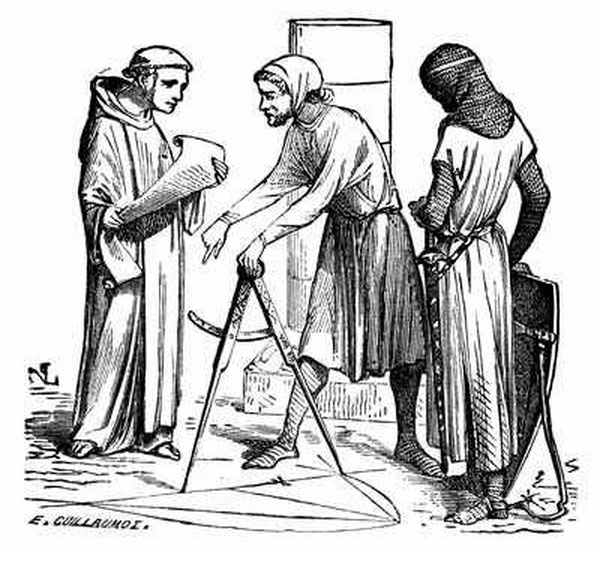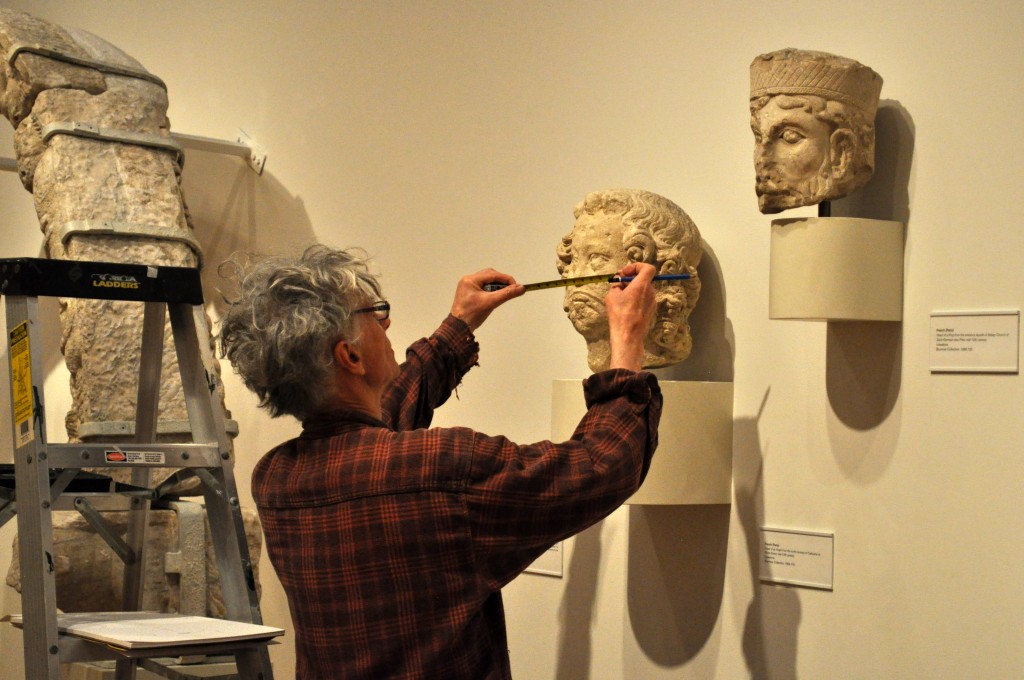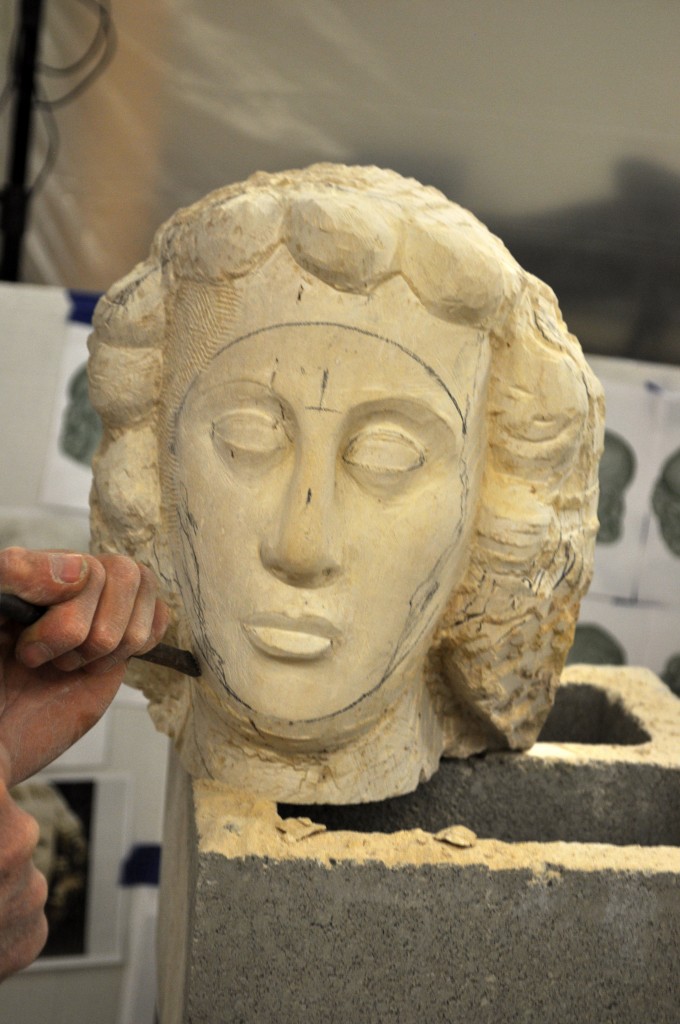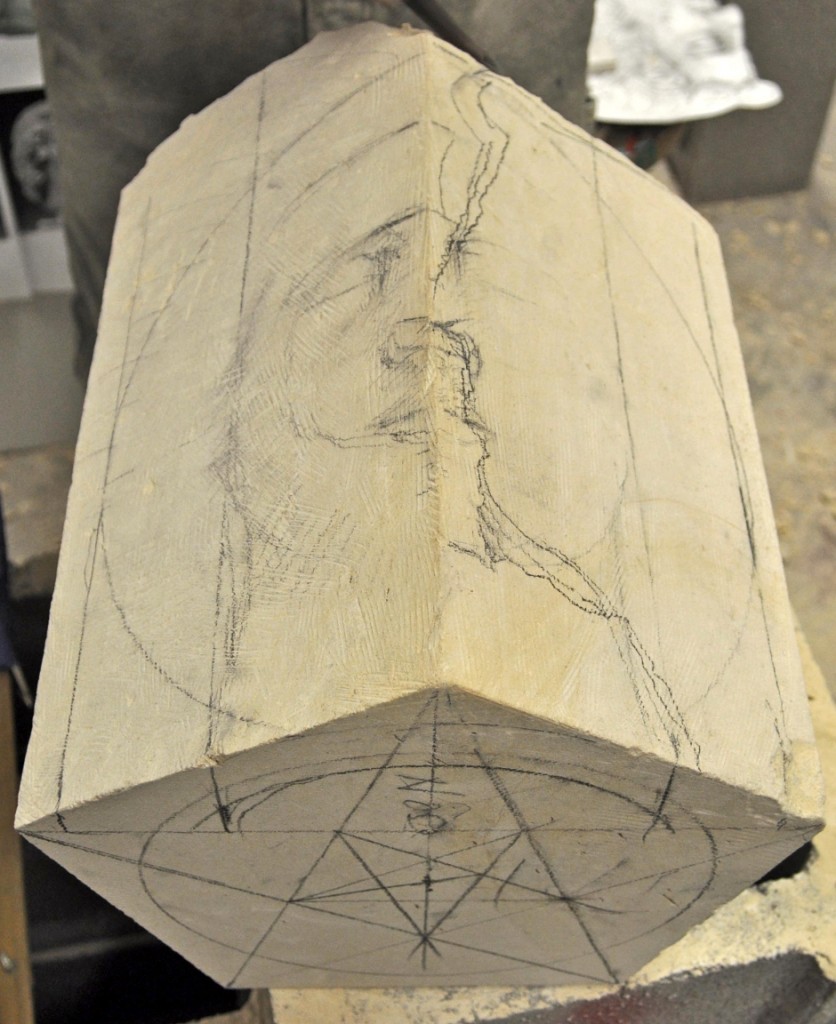Sculptors, both medieval and modern, approach stone carving by first visualizing two-dimensional shapes and then transferring those shapes onto the three-dimensional stone. Today many tools and materials are available to help the modern sculptor visualize his or her work, like computers and 3D printers.
Medieval sculptors did not have the luxury of virtual 3D models, and at times they may not even have had paper, which was scarce and expensive. Architectural drawings and blueprints were done on parchment, which only became readily available to artists in the 14th century.
Early medieval sculptors most commonly used chalk and slate for drawing. They sketched lines and shapes directly onto the surface of their working block after careful measuring. Some may have used human or clay models as a reference, possibly with a pointing machine that allowed the sculptor to align and mark cuts into the block of stone from the model. Other marking and measuring tools evolved into devices like the caliper, divider, and the compass, the latter of which has become a recognizable symbol of stone masonry and is still used today.
- “Medieval Masons with a Compass.” Dictionnaire Raisonné de L’Architecture Française du XI au XVI Siècle. Eugène Viollet-le-Duc. Paris: A. Morel, 1875. Frontispiece.
- Carradori, Francesco. “A Sculptor measuring for pointing.” The Making of Sculpture: The Materials and Techniques of European Sculpture. Ed. Marjorie Trusted. London: V & A Publications, 2007.
- “Pointing Machine.” Sculpture: Processes and Principles. Rudolph Wittkower. New York: Harper & Row, 1977.
- de Honnecourt, Villard. “Drawings with geometric schemata.” Sculpture: Processes and Principles. Rudolph Wittkower. New York: Harper & Row, 1977.
- Simon Verity in Nasher Museum, photo by Jessica Pissini
- Simon Verity’s drawings, photo by Jessica Pissini
- Simon Verity’s drawing of the Head of a Virtue
- Simon Verity’s drawing of the Head of a Virtue
- Simon Verity’s drawing of the Head of a Virtue
- Simon Verity’s drawing of the Head of a Virtue
- Shapes on the surface of the stone, sculpted by Simon Verity, photo by Jessica Pissini
- Shapes on the surface of the stone, sculpted by Simon Verity, photo by Jessica Pissini











